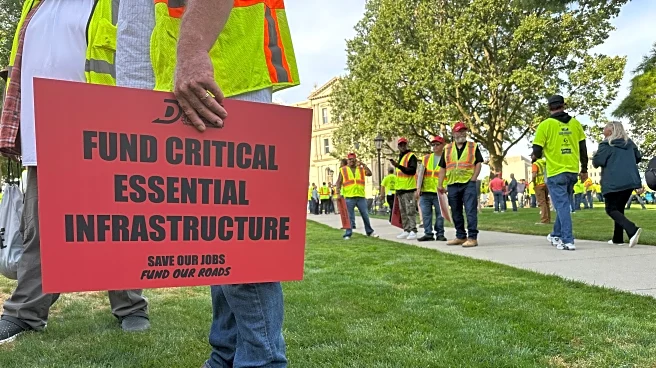What's Happening?
Michigan's unemployment rate decreased slightly to 5.2% in August, according to the Michigan Department of Technology, Management, and Budget. However, this decline is attributed to a reduction in the workforce rather than an increase in employment. Approximately 14,000 fewer individuals are holding or seeking jobs, marking the fifth consecutive month of workforce shrinkage. Factors contributing to this trend include aging out of the workforce, discouragement among job seekers, and high childcare costs. Wayne Rourke, Michigan Labor Market Information Director, noted the significant historical magnitude of this decline. University of Michigan economist Gabriel Ehrlich described the situation as complex, indicating that the underlying reasons for the unemployment rate drop are not entirely positive.
Why It's Important?
The reduction in Michigan's workforce participation has broader implications for the state's economy. A shrinking labor force can signal potential challenges in economic growth and productivity. This trend may affect industries reliant on a steady supply of workers, potentially leading to labor shortages and increased operational costs. Additionally, the decline in workforce participation could impact public policy, prompting discussions on how to address barriers such as childcare costs and job seeker discouragement. Stakeholders, including policymakers and business leaders, may need to consider strategies to reverse this trend and support workforce engagement.
What's Next?
Future reports from state and federal agencies will provide more data to understand the full scope of Michigan's employment situation. Policymakers may explore initiatives to encourage workforce participation, such as improving access to affordable childcare and providing support for job seekers. Businesses might also adapt by investing in automation or offering incentives to attract workers. The ongoing analysis of labor market trends will be crucial in shaping economic strategies and policies.














